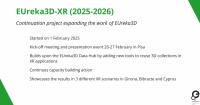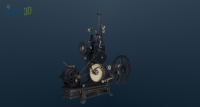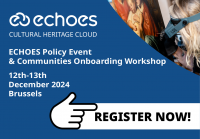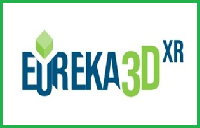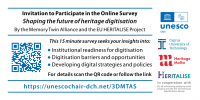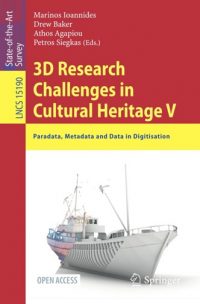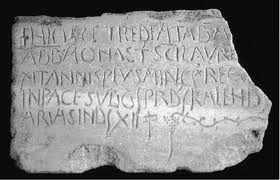 As Greek and Latin are the origin of European Culture, EAGLE is the Best Practice Network that brings together some of the most prominent European institutions and archives in the field of ancient epigraphy, to provide Europeana with the critical mass of quality-oriented content.
As Greek and Latin are the origin of European Culture, EAGLE is the Best Practice Network that brings together some of the most prominent European institutions and archives in the field of ancient epigraphy, to provide Europeana with the critical mass of quality-oriented content.
Classical Greek and Latin culture is the very foundation of the identity of modern Europe. A variety of modern subjects and disciplines as practiced today have their roots in the classical world: from philosophy to architecture, from geometry to law.
Epigraphy is characterized by 3 peculiarities, that EAGLE aims at touching:
The first one is that, as a field of study, classic epigraphy has evolved into three strictly separate disciplines, i.e. Greek, Latin and Christian epigraphy, characterized by separate collections and corpuses used for reference, separate publications, separate populations of scholars and researchers.
The second one is that inscriptions have traditionally been featured in geographically-separated archives, with the result that various inscribed documents that should be collated because of thematic or historic commonalities are often scattered across multiple collections. All these factors have so far seriously hindered research.
The third one is that, given the nature of the archives, their disjointedness and the lack of available translations, ancient inscriptions have for the most part remained the preserve of the specialist, and their enjoyment by the general public has been impossible. This is true for schools as well, whose history syllabi would benefit from the possibility of accessing inscriptions online.
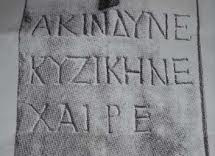
EAGLE will improve the study of epigraphs in several ways:
- aggregating the major epigraphic collections in Europe in a large, integrated online repository of ancient inscriptions, as part of Europeana;
- mapping metadata from the various partner archives into a common intermediate format, which will enable customized EAGLE-specific services, as well as ease the job of mapping into the proper formats as requested by Europeana;
- providing an easy-to-use content management system for epigraphic archives and institutions;
- providing tools for automated metadata extraction harvesting and enrichment; the rich metadata will also enable cross-linking by specialists;
- providing and curating a comprehensive set of metadata which include translations of the most important texts, so as to make epigraphic texts available for the first time in large quantity to the general public;
- providing an infrastructure for extending the scope of translations, in the form of a wiki, which will enable specialists to add translations in other European languages even after the project expires;
- providing a multilingual and not OS related “Flagship Mobile Application” for users of Smartphones to enable them to get information about one visible inscription by taking a photo and sending it to the EAGLE portal for recognition and for accessing the associated information in EAGLE;
- providing a “Flagship Storytelling Application” to enrich, contextualise and link the epigraphs to one another and with other related information available in Europeana’s Linked Open Data cloud, thus contributing to reconstruct the thematic and historic commonalities between different inscriptions that are scattered across multiple collections;
- establishing a Best Practice Network for the upkeep of the above common global resource, committed to its further expansion by attracting both new institutions and experts, and thus effecting the collaboration and interdisciplinary approach which have so far been lacking in epigraphy;
 The EAGLE BPN represents a community of research institutions documenting the most recent progress in the study of Classical Epigraphy.
The EAGLE BPN represents a community of research institutions documenting the most recent progress in the study of Classical Epigraphy.
By aggregating digital content from unique and authoritative collections in its domain, the BPN brings together a significant quantity of information about ancient writings on ancient artifacts to the wide Europeana audience, thereby enhancing the quality of the historical experience and stimulating discovery in primary source materials never disclosed before to users on such a large scale.
In terms of broader goals, the aims of EAGLE are:
- to enrich Europeana with a new type of content which is totally missing now and which can provide additional insight and knowledge about the roots and the development of the European culture;
- to attract tourists and mobile users to Europeana, who will be able to access quickly info and translations pertaining to inscriptions of interest; thus, to establish a new community of mobile users revolving around access to inscriptions;
- to provide specialists and Classical Greek and Latin culture enthusiasts (epigraphists, curators, researchers, students, etc..) a new unified resource and with rich metadata sets available as Linked Open Data in order to make the most of it;
- to support the above community services through a dedicated ICT infrastructure.
Visit the Eagle website for more information on the project.



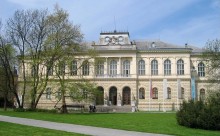

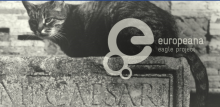
 If you have interesting news and events to point out in the field of digital cultural heritage, we are waiting for your contribution.
If you have interesting news and events to point out in the field of digital cultural heritage, we are waiting for your contribution.





